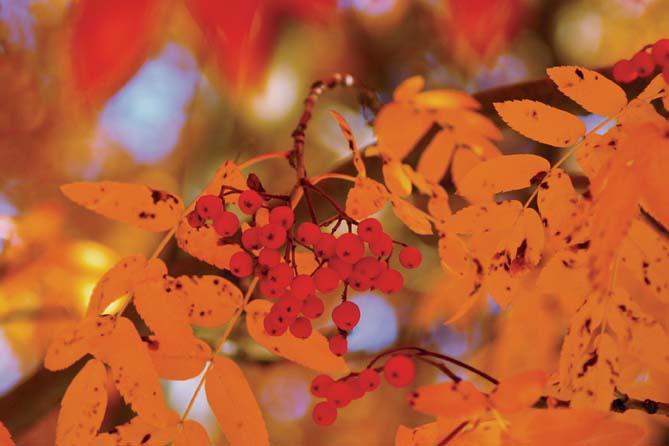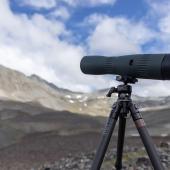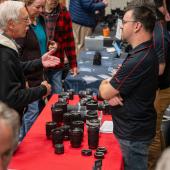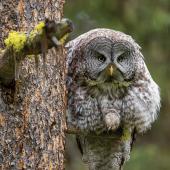Autumn Color, Autumn Light
Autumn gives gifts to photographers. Trees like birch and maple become dramatic and colorful. Contrasts like that between a moss-green lichen and russet strawberry leaf sharpen. Objects like antlers and tree trunks add interest to images of the season. Late autumn is more austere.
Though autumn light is more forgiving than summer’s glare, the sun still offers far better light during “the golden hours” early or late in the day. If you must shoot midday, use your digital camera’s “cloudy” or “shade” white-balance setting to warm the light in your image. To enhance color definition and make the sky as blue as possible, use a polarizer.
Want to photograph the movement of fall colors in the wind? Try longer exposure times to make the most of the motion. Use a sturdy tripod. Don’t forget to use either the self-timer or a remote release so that you don’t jar the camera when you release the shutter button.
In the mornings, look for frost and ice crystals on trees, in plants, on that red leaf lying on your front sidewalk. Let the initial novelty of scraping your windshield in the mornings allow you to see the beauty of frost patterns. You can also shoot frost on the windows from inside your house. Choose a lens that has a close focusing distance like a wide-angle or a macro. Experiment with the color of the background by moving around so that different objects create color behind the frost on the window.
Most important of all, don’t put off taking autumn shots until you have time to go to a favorite spot. Tomorrow’s storm, its wind and cold, may do away with everything that made your special spot spectacular to photograph. Capture the beauty in your life in the moment: at home, as you travel to work, as you walk the dog. It’s there.
Jenna Caplette is a writing coach and aspiring photographer who teaches “Writing from Photographs” at F-11. Read other tips at f11photo.com.













